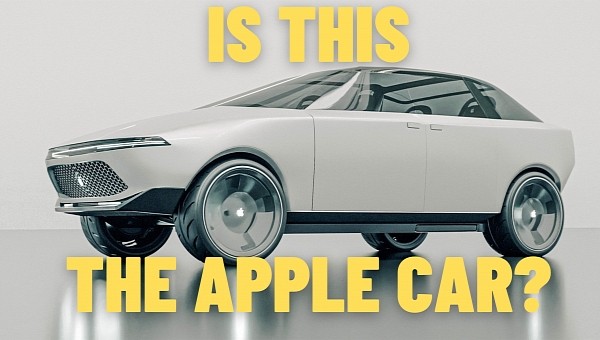New Apple technology could allow self-driving vehicles to deal with nighttime limitations caused by limited visibility due to low-light conditions.
A patent published this week describes a concept that allows a self-driving car to increase visibility in low-light environments and avoid enforcing limitations to its systems.
While self-driving systems rely on cameras and sensors that already allow them to detect objects in total darkness, the effective range is very limited. Apple says most self-driving vehicles don’t see farther than 60 meters, and as such, some of their capabilities could be restricted.
The travel speed might eventually be limited, Apple says, as the vehicle needs more time to detect objects in front and travel safely.
This is why Apple is proposing a new approach that relies on multiple complementary image-sensing systems. The company says a near-infrared sensor with a near-infrared illuminator could be installed on a vehicle specifically to increase visibility in low-light environments.
Such a configuration would allow detection at a maximum distance of 200 meters, eventually lifting speed restrictions as well.
Apple envisions various implementations, including complex configurations that use combinations of multiple sensors, such as long-wave infrared tech, to obtain a wide field of view around the vehicle. The company says that eventually, using this technology, self-driving vehicles would become aware of what happens both around and in front of the car.
This technology could make its way to the Apple Car when self-driving capabilities are ready for launch.
People familiar with the matter previously said the vehicle could launch with a more conventional approach. The work on autonomous driving isn’t making the progress Apple hoped it would make, and as such, the Apple Car could launch with pedals and a steering wheel at first. Apple is still aiming at creating a living room of wheels that comes down to a vehicle allowing for full self-driving capabilities virtually anywhere.
The first iteration of the Apple Car could sport self-driving support only on certain roads such as highways, as Apple could use an approach similar to Tesla’s. Drivers will still be allowed to take full control of the vehicle at any time.
Apple’s ambitious vehicle wouldn't see daylight earlier than 2025. An official announcement could be made this year or in 2024, but the car still needs at least two years to launch for the first customers. The project is already in an advanced stage, with Apple currently involved in supply talks with various partners across the world. Most recently, Apple executives traveled to Korea to discuss battery supply deals.
A beta version of the Apple Car could enter a limited test stage later this year, though Apple has so far remained completely tight-lipped on its plans for the automotive expansion.
While self-driving systems rely on cameras and sensors that already allow them to detect objects in total darkness, the effective range is very limited. Apple says most self-driving vehicles don’t see farther than 60 meters, and as such, some of their capabilities could be restricted.
The travel speed might eventually be limited, Apple says, as the vehicle needs more time to detect objects in front and travel safely.
This is why Apple is proposing a new approach that relies on multiple complementary image-sensing systems. The company says a near-infrared sensor with a near-infrared illuminator could be installed on a vehicle specifically to increase visibility in low-light environments.
Such a configuration would allow detection at a maximum distance of 200 meters, eventually lifting speed restrictions as well.
Apple envisions various implementations, including complex configurations that use combinations of multiple sensors, such as long-wave infrared tech, to obtain a wide field of view around the vehicle. The company says that eventually, using this technology, self-driving vehicles would become aware of what happens both around and in front of the car.
This technology could make its way to the Apple Car when self-driving capabilities are ready for launch.
People familiar with the matter previously said the vehicle could launch with a more conventional approach. The work on autonomous driving isn’t making the progress Apple hoped it would make, and as such, the Apple Car could launch with pedals and a steering wheel at first. Apple is still aiming at creating a living room of wheels that comes down to a vehicle allowing for full self-driving capabilities virtually anywhere.
The first iteration of the Apple Car could sport self-driving support only on certain roads such as highways, as Apple could use an approach similar to Tesla’s. Drivers will still be allowed to take full control of the vehicle at any time.
Apple’s ambitious vehicle wouldn't see daylight earlier than 2025. An official announcement could be made this year or in 2024, but the car still needs at least two years to launch for the first customers. The project is already in an advanced stage, with Apple currently involved in supply talks with various partners across the world. Most recently, Apple executives traveled to Korea to discuss battery supply deals.
A beta version of the Apple Car could enter a limited test stage later this year, though Apple has so far remained completely tight-lipped on its plans for the automotive expansion.










